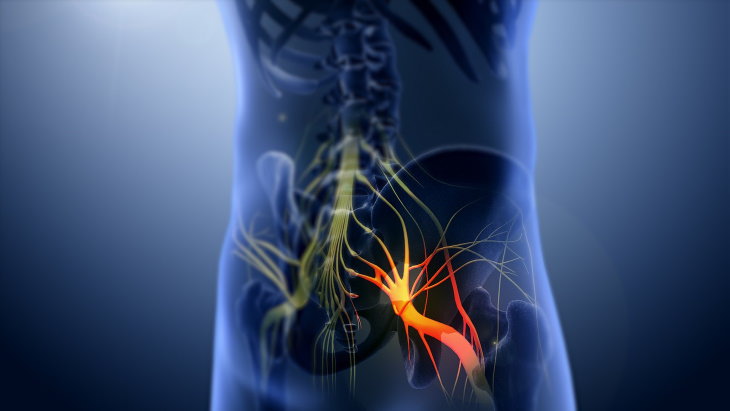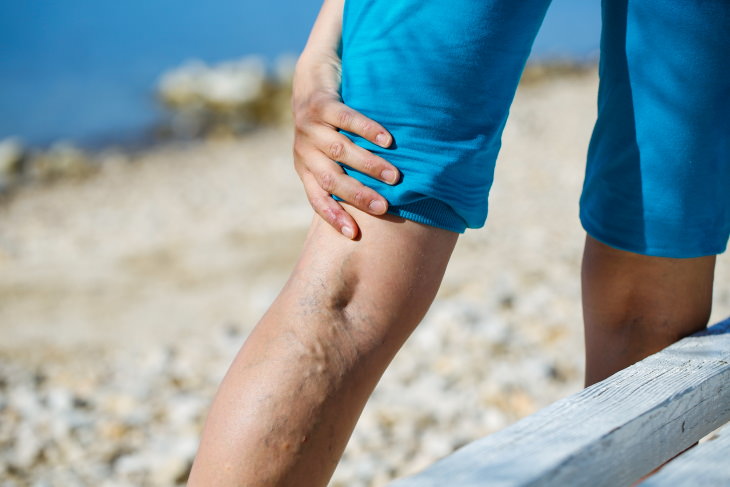1. Relieves lower back pain
Chronic back pain can interfere with your sleep without you even realizing it. If you’re suffering from any kind of lower back pain, be it sciatic nerve pain, a pinched nerve, or joint pain, sleeping with legs elevated can be immensely helpful.

Sleeping on your back, in general, is beneficial for back pain because it distributes your weight as evenly as possible, so it reduces the risk of spinal disc compression. To promote the natural curvature of the spine and reduce the pressure off the spinal column even further, put a bolster or pillow under your knees. Sleeping in this position will make sleep more comfortable for you and offers relief from lower back pain as well.
Related Article: Your Gut and Overall Health May Be Dependent On Your Sleep Position
2. Improves blood circulation
Poor blood circulation in the legs is not uncommon, and it dramatically increases one’s risk of blood clots and potentially life-threatening conditions like deep vein thrombosis and stroke. Elevating your legs 6-12 inches (15-30 cm) above your heart will improve blood flow from your legs toward your heart, essentially boosting blood circulation in the lower extremities.
It all boils down to simple physics. Whenever your legs are below the level of your heart (e.g. when standing), the blood in the leg veins must work against gravity to return to the heart. Simply elevating your legs makes gravity work for instead of against you, improving blood flow. This position also means that your heart won’t need to pump as much, which means that elevating your legs is also beneficial for heart health.
3. Reduces swelling in the legs

Things like inflammation or edema (fluid trapped in the tissues, usually in the feet, ankles, and legs) can lead to soreness and swelling in the lower extremities. Many health conditions, such as chronic cardiovascular or lung diseases, as well as a diet high in salt or prolonged periods of sitting or standing, can contribute to swelling in the legs. The condition can be quite painful and may interfere with your sleep.
Similar to the way leg elevation improves blood circulation, it can also aid in draining away trapped fluids from your legs. If you suffer from swollen feet, this may be the best sleeping position for you.
4. Lowers pressure

If you have to stand or sit for long periods of time, it can make blood difficult to drain from the veins in the lower body. The collected blood, in turn, creates excess pressure in veins. This pressure equals soreness and tension in the legs, and it is believed to cause varicose veins too.
Varicose veins are visibly twisted and inflamed veins that are particularly common among people who work standing jobs. Raising your legs at night will bring relief to tired feet and lower the pressure in the lower body too.
Who can benefit from sleeping with their legs raised?
- Lower back pain sufferers
- Those who have sciatica or a pinched nerve
- People recovering from injuries to the legs or feet
- After surgery
- Patients with chronic joint conditions
- Those who have vein conditions, such as varicose veins or superficial thrombophlebitis
- Deep vein thrombosis sufferers
- Chronic venous insufficiency patients
- Pregnant persons
- Anyone suffering from edema.
How to safely elevate the legs during sleep
The use of a pillow or bolster is certainly the cheapest and easiest way to elevate your legs. Automated adjustable mattresses or bed frames are an even better choice, but they can be very expensive, so we don’t recommend them to beginners.
To remedy back pain, one small pillow underneath the knees will suffice, but other conditions may require using several blankets and large pillows to elevate your legs above the heart.

Here are a few tips to consider if you want to try sleeping with elevated legs:
1. Practice on the couch. A new sleeping position may feel unusual at first, so before you commit to a full night of sleep with your legs raised, try the position as you’re relaxing on the couch. This will help you transition more smoothly.
2. Start low. Everyone is different, and your individual needs may not require you to stack up 2-3 pillows every night before bed. Start with one pillow under your knees, get used to the position, and then add one more to see if that helps even more, and so on, until you find the best position for you.
3. You don’t need to sleep with your legs up all night. It all depends on the condition you want to address. For edema, for example, a few hours of sleep or just sitting with your legs up can help drain the excess fluids, whereas patients with lower back pain may feel that they need a whole night of sleep in this position to experience the most benefits. So we encourage you to play around with the time.
Share these tips with those who will find them beneficial!
 Go to BabaMail
Go to BabaMail





























